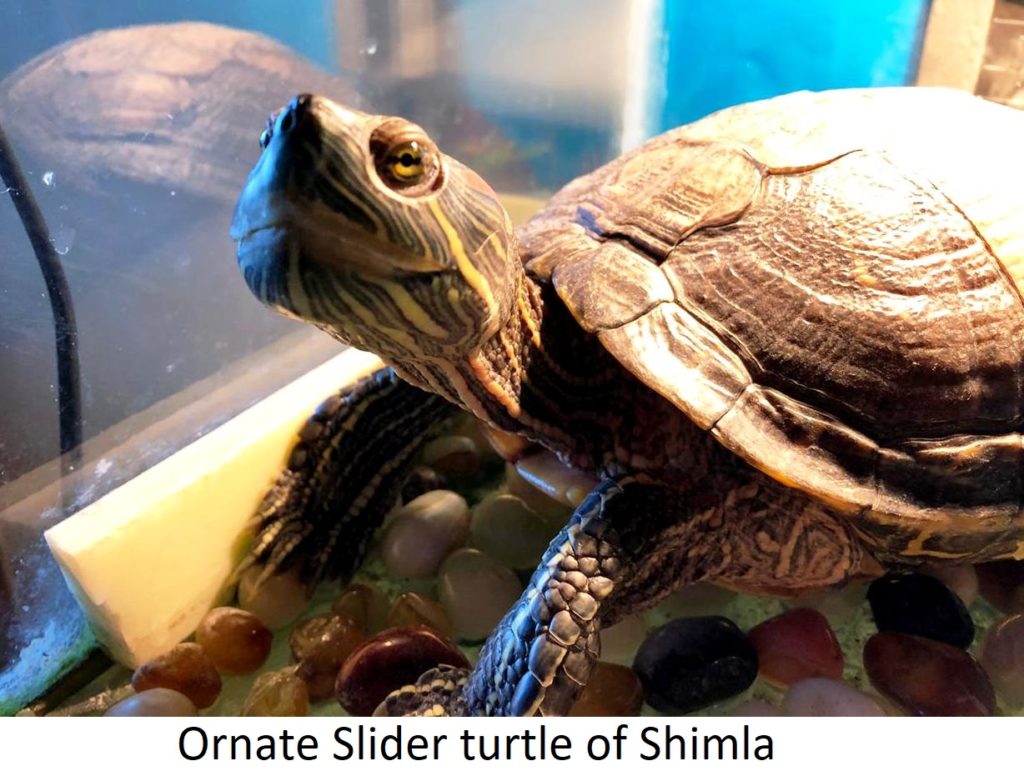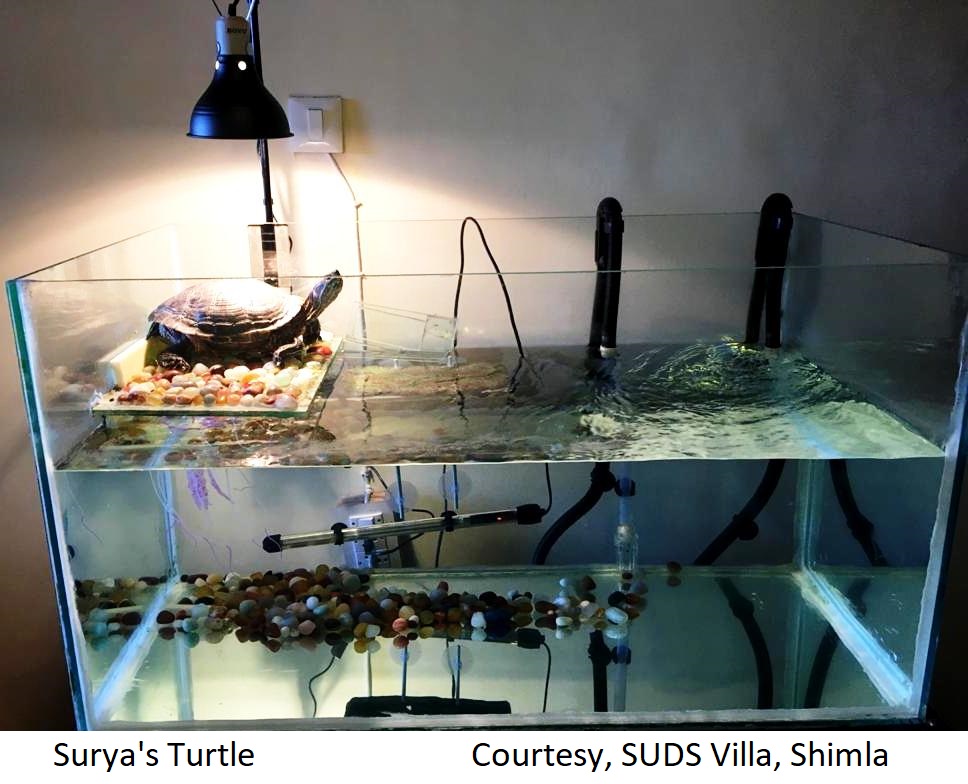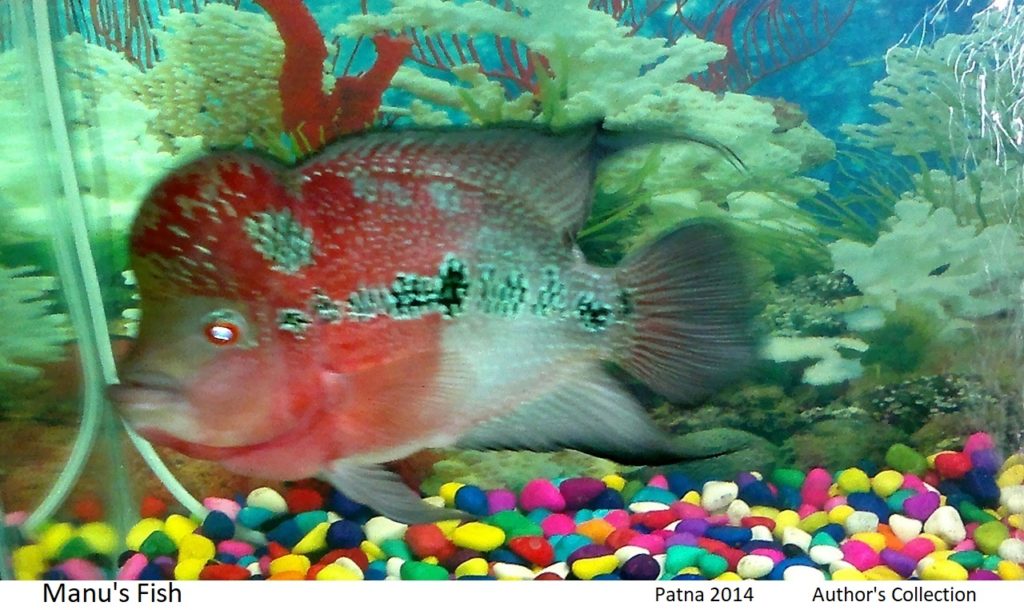 From early years of married life, raising an aquarium at home was our desire. I took to studying the techniques and styles & the know -how.
From early years of married life, raising an aquarium at home was our desire. I took to studying the techniques and styles & the know -how.
On a subsequent visit to Chandigarh, I was prompted to buy a colourful collection of tiny fish displayed with miniature aquatic plants and sea shells all in a glass bottle. Elsewhere in the city, I found a glass bowl to fit in the contents to give better looks to the assembly.
And Lo! A nano acquarium was on display in our ‘Doctor’s Residence’ at Dharmshala. Besides being a source of stress reduction and mood elevation, I realized it became an object of attraction for one and all.
- Encouraged , I took up the subject in a hope to craft even better aquariums as a hobby:
An aquarium (also vivarium or terrarium) is water-filled tank of any size having at least one transparent side in which aquatic plants or animals are kept and displayed.
An aquarium can range from a small glass bowl of water to huge public aquaria that contain massive aquatic replicas. Glass aquarium has been a choice for many a home for many years. Water-tight seal with silicone has given way to acrylic. Besides being economical, glass is scratch resistant.
- Fiberglass; & reinforced plastics work out still stronger for bigger aquariums.
- Artificial lighting, aeration, filtration, and heating of the water are hobbyists’ delight. The designs of frames reflect aesthetics. In Japan, home aquariums popped up as aesthetic compositions, rather than simply being fish exhibits.
- ^The art and craft is arranging of the aquatic plants, as well as rocks, stones, cave work, or driftwood, in an aesthetically pleasing manner within an aquarium—in effect, gardening under water. Aquascape designs include a number of distinct styles, including the garden-like Dutch style and the Japanese-inspired nature style.
- In January, 1986, I with my sons traveled by our new Maruti HIK777 a long way to desert area of JaiIsalmer, Rajashan. On our way to “Sam Sand Dunes”, in the compounds of some abandoned villages, to our pleasant surprise, we came across a variety of tiny aqua fossils! scattered around. We picked up a heapful for our aquarium, back home.
- In the United States, aquarium keeping had been the second-most popular hobby after stamp collecting. The hobby is popular in Europe, Asia, and North America.
- Plants added to water in a container give enough oxygento support animals.
- Miniature turtles and dwarf turtles, that stay small, are one of the most popular exotic pets. Other than a tank, you may need a container as well to put in the little turtle during quarantines. Turtles may be fed at spaced intervals. Aquatic turtles should preferably be put together with larger fish (they could eat small fish). Turtles of all kinds require heat lights.
- The turtle we had initially put in our aquarium at ‘Electricity House’*, Dharamshala in Eighties; and later, carried it along, stayed with us, at least, for a decade.
- There is ample choice of small, thin, easy-to-care; & colourful freshwater fish** . Besides, permissions from the tanks of the Fisheries department; and also from local khuds; ponds and rivulets in vicinity.
- While in Denmark, in1983, varied designs and styles of aquaria fascinated me. Back home I brought many designer accessories and attachments, including a glass- wool filter, a heater, a thermometer; & the toy exhibits.
On my subsequent visits to various countries, including Switzerland, England, Germany, Holland; Norway, Japan, China; I experienced and enjoyed aquiculture through and through.
- New trend is to have very small aquariums, termed Nano aquariums .These are intended to display a tiny but self-contained ecosystem.
- Filtration systems are the complex components of aquariums, which may contain two essential forms of filtration: biological and mechanical. Chemical filtration could also be considered under some circumstances for optimum water quality.
- Aquarium heaters combine a heating element with a thermostat for regulating water temperature. An aquarium can be placed on an aquarium stand. Because of the weight of the aquarium, a stand must be strong as well as level.
- Several nutrient cycles are important in the aquarium. Dissolved oxygen enters the system at the surface water-air interface. Similarly, carbon dioxide escapes the system into the air.
- An aquarium must be maintained regularly to ensure that the fish are kept healthy. Daily maintenance consists of checking the fish for signs of stress and disease. Also, we must make sure that the water is of good quality and it is not cloudy or foamy and the temperature of the water is appropriate for the particular species of fish that live in the aquarium.
- I did various aquariums suiting to the changed locations; and befitting the space and surroundings. So did my sons, Aseem and Manu; even my grand children Madhav and Hemakshi liked it.
- I often cleaned the assemblage and topped up the aquarium with tap water. To ward off the excessive chlorine, it was possible to “condition” the water by simply letting it stand for a day or two. However, chloramine is now used more often and does not leave the water as readily usable. Water conditioners formulated to remove chlorine or chloramines are often all that is needed to make the water ready for aquarium use.
- Live plants in an aquarium help to complete the nitrogen cycle, by utilizing nitrate as fertilizer.
- Limiting factors include the oxygen availability and efficiency of filtration. It is just a personal judgment, by experience, to estimate the number of fish that can be kept in an aquarium. However, growth rate, activity level, social behaviour, is also the governing factors.
- According to one study, smaller fish consume more oxygen than larger fish. Oxygen exchange at the surface is thus important; as also the aeration and the waste decomposition rates.
For planted freshwater aquariums, a balance has to be stuck between the lighting requirements, the plants foliage, and the nutrients. Nowadays, detailed custom-designed home aquariums have become status symbols. …………………………………………………………………………………………………………………………………………………..
*The house was nicknamed kachhuewali kothi by youngsters.
** Neon Tetra & Guppy (Rainbow) to name a few.
^ Aquascaping – Wikipedia
Prof. (Er.) Chander P Mahajan is an art critic & a free lance journalist. The Environmentalist stays in Shimla and Dalhousie, Himachal Pradesh, India.







